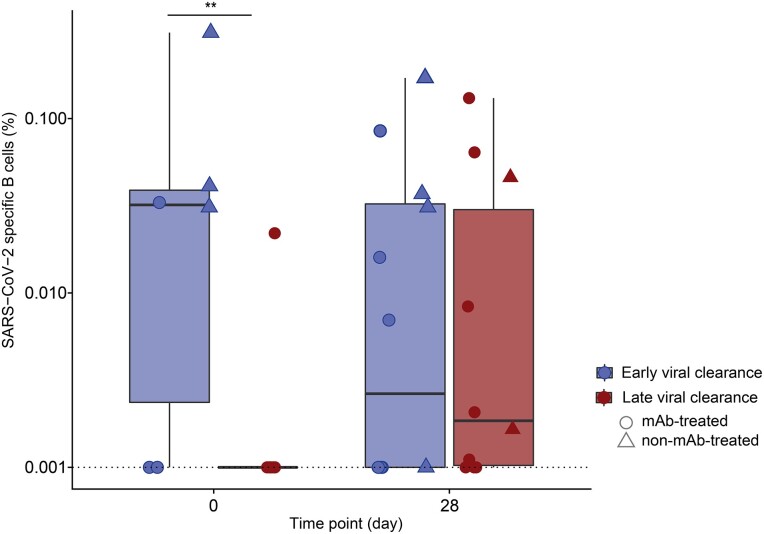Figure 3.
Severe acute respiratory syndrome coronavirus 2 (SARS-CoV-2)–specific B cells over time in patients with early and late viral clearance. The percentage of spike-specific B cells was measured in 13 day 0 and 22 day 28 samples in 24 patients infected with the SARS-CoV-2 Omicron variant. Early viral clearance was defined as a positive SARS-CoV-2 reverse-transcription polymerase chain reaction (RT-PCR) >28 days and late viral clearance as a negative SARS-CoV-2 RT-PCR ≤28 days. Circles represent monoclonal antibody (mAb)–treated patients and triangles represent non-mAb-treated patients. The bold line indicates the median, boxes indicate the 25th and 75th percentiles, and whiskers represent 1.5× IQR. All data points are displayed. Given the prevalence of zeroes in the y-axis value, 0.001 was added to all y-axis data points to account for the logarithmic scale. The dotted line represents the lower limit of detection. Peripheral blood mononuclear cells were stained with a probe mix with 2 colors for the autologous spike protein and measured with fluorescence-activated cell sorting. A zero-inflated mixed model was used in statistical analysis. **P < .01.

